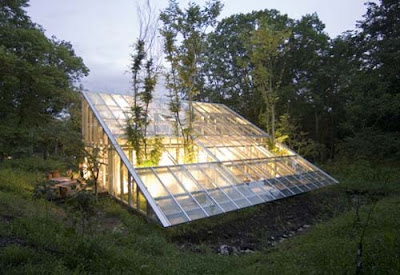Monday, 30 April 2012
Sunday, 29 April 2012
DESIGN FUNCTION
The massing of the building needs to represent the concept of 'Evolution'. As evolution is about growth and development, the building needs to tell a story, and bring a sense of delight as the users are entering and leaving spaces within the building. In order to do this, the Environmental Educational Centre will consist of 3 major spaces within the envelope.
DESIGN INSPIRATION
Architecture that responds to its surroundings and harmonises with the environment, visually and physically.
http://freshome.com/2011/01/17/think-green-10-best-sustainable-homes-of-2010
Bringing the natural environment into indoor spaces and the use of materials are important to the building. The building will need to respond to the site through site analysis however, it will also have to meet the core concepts of the design. (Evolution)
http://inhabitat.com/national-heart-center-in-singapore-by-broadway-malyan/
SUSTAINABILITY
Evolution of an urban city needs the worlds energy to be developed as it is not natural but man made. As construction is very well connected to the worlds energy and natural resources, sustainability is a big issue in todays society and needs to be educated to the next generation for the world to maintain its natural beauty and minimalise global warming. For Brisbane's city to evolve, it is a matter of education and understanding on which way we direct ourselves for the future.
WHAT IS SUSTAINABILITY? and WHAT DOES IT MEAN TO US?
"Sustainability is the capacity to endure. For humans, sustainability is the long-term maintenance of responsibility, which has environmental, economic, and social dimensions, and encompasses the concept of stewardship, the responsible management of resource use. Inecology, sustainability describes how biological systems remain diverse and productive over time, a necessary precondition for the well-being of humans and other organisms. Long-lived and healthy wetlands and forests are examples of sustainable biological systems.
Healthy ecosystems and environments provide vital resources and processes (known as "ecosystem services"). There are two major ways of managing human impact on ecosystem services. One approach is environmental management; this approach is based largely on information gained from educated professionals in earth science, environmental science, andconservation biology. Another approach is management of consumption of resources, which is based largely on information gained from educated professionals in economics.
Human sustainability interfaces with economics through the voluntary trade consequences of economic activity. Moving towards sustainability is also a social challenge that entails, among other factors, international and national law, urban planning and transport, local and individual lifestyles and ethical consumerism. Ways of living more sustainably can take many forms from controlling living conditions (e.g., ecovillages, eco-municipalities and sustainable cities), to reappraising work practices (e.g., using permaculture, green building,sustainable agriculture), or developing new technologies that reduce the consumption of resources."
http://en.wikipedia.org/wiki/Sustainability
Image retrieved from
http://www.worldarchitectnews.com/wp-content/uploads/Natural-materials-Sustainable-Camouflage-House.jpg
Thursday, 26 April 2012
CONCEPT SITE ANALYSIS
The different times of the day is shown in the montage of the site as it encapsulates the different atmospheres that the site has.
Evolution is a development that takes time and consistencty. It also changes form physically. As Brisbane has changed dramaticaly, an analysis of building development in chronological order is shown for concept site analysis. Throughout the years, buidlings develop due to demamd, in population, jobs, restoration etc. The common aspect of this concept is that, buildings are built according to that specific time and the need for people of when it is built.
.
The montage of Brisbane CBD shows the development and the dramatically evolved city that has become. This photo shows a strong juxtapositioning of what Brisbane use to be and what it is today.
With a combination of photos of different times and stages of Brisbane, this montage shows the rawness that the land use to be. It shows heavily how much the city has developed and what mankind has achieved.
Friday, 20 April 2012
CONCEPT
Tuesday, 17 April 2012
EVOLUTION (SITE)
Saturday, 14 April 2012
OLD BRISBANE
The old photos show how Howards Smith Wharves hasn't really been developed as much as Brisbane's CBD. This somewhat depicts how much Brisbane's development. The two sides are a juxtaposition of the past and the present.
http://www.bonzle.com/pictures-over-time/pictures-taken-in-1938/page-2/picture-covr655o/size-4/brisbane/story-bridge-in-the-fourth-stage-of-construction-brisbane-1938 (Retrieved on 16 April 2012)
Wednesday, 11 April 2012
SITE ANALYSIS
The site's surroundings shows the two different sides of Brisbane. On the left, the cityscape of the CBD shows the developed side of Brisbane and on the right where Howards Smiths Wharves and across shows the more undeveloped areas.
Wednesday, 4 April 2012
Subscribe to:
Comments (Atom)




















.jpg)



